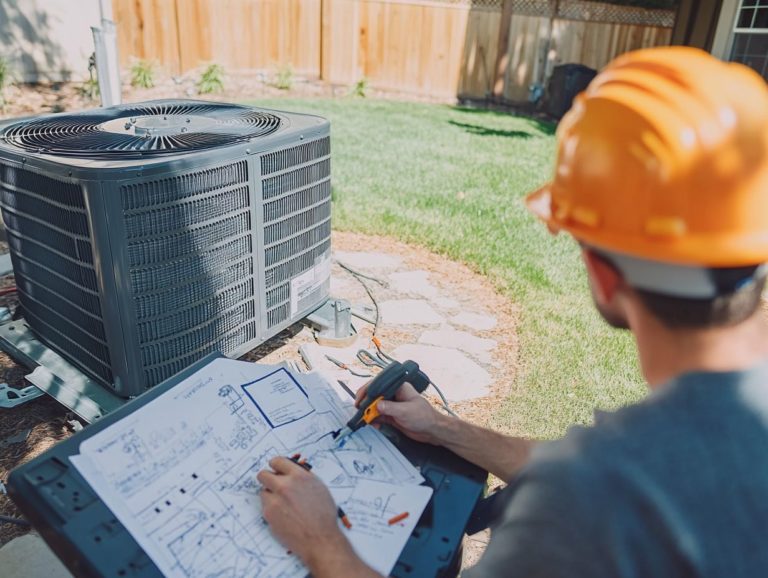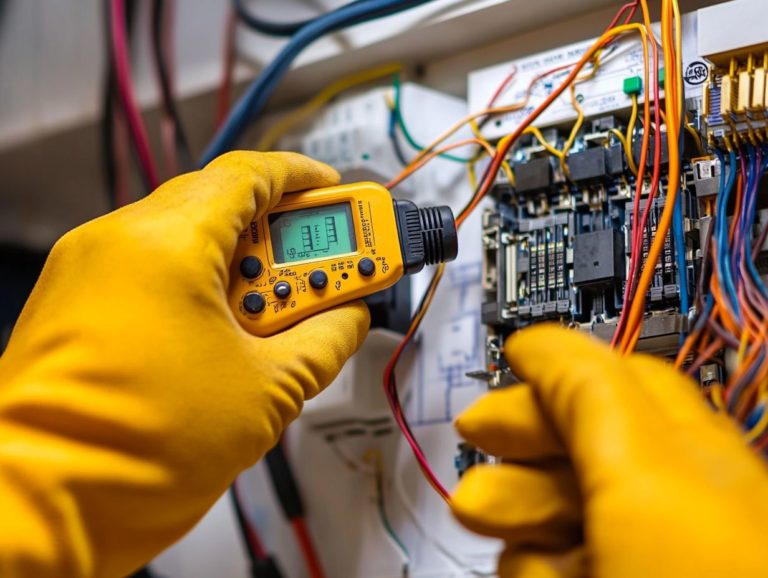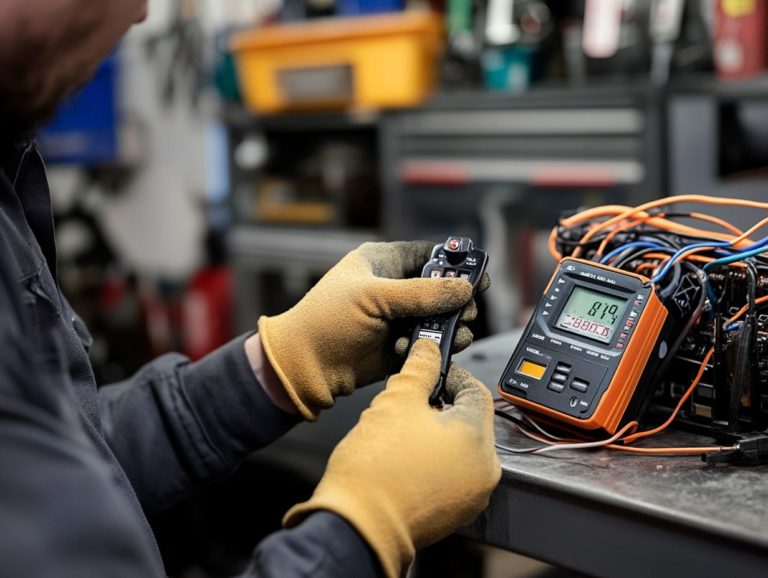The Best Practices for Tire Care
Tires are the unsung heroes of your vehicle, playing a crucial role in safety, fuel efficiency, and overall driving performance. Proper maintenance is essential to extend their lifespan and guarantee a smooth ride.
This article dives into key practices for tire care, highlighting the importance of maintaining tire pressure, the benefits of regular rotation, and how to recognize signs of tread wear. It also addresses the care of your spare tire and how to prepare for seasonal changes.
Let s boost your tire maintenance skills now for a safer, smoother drive!
Contents
Key Takeaways:
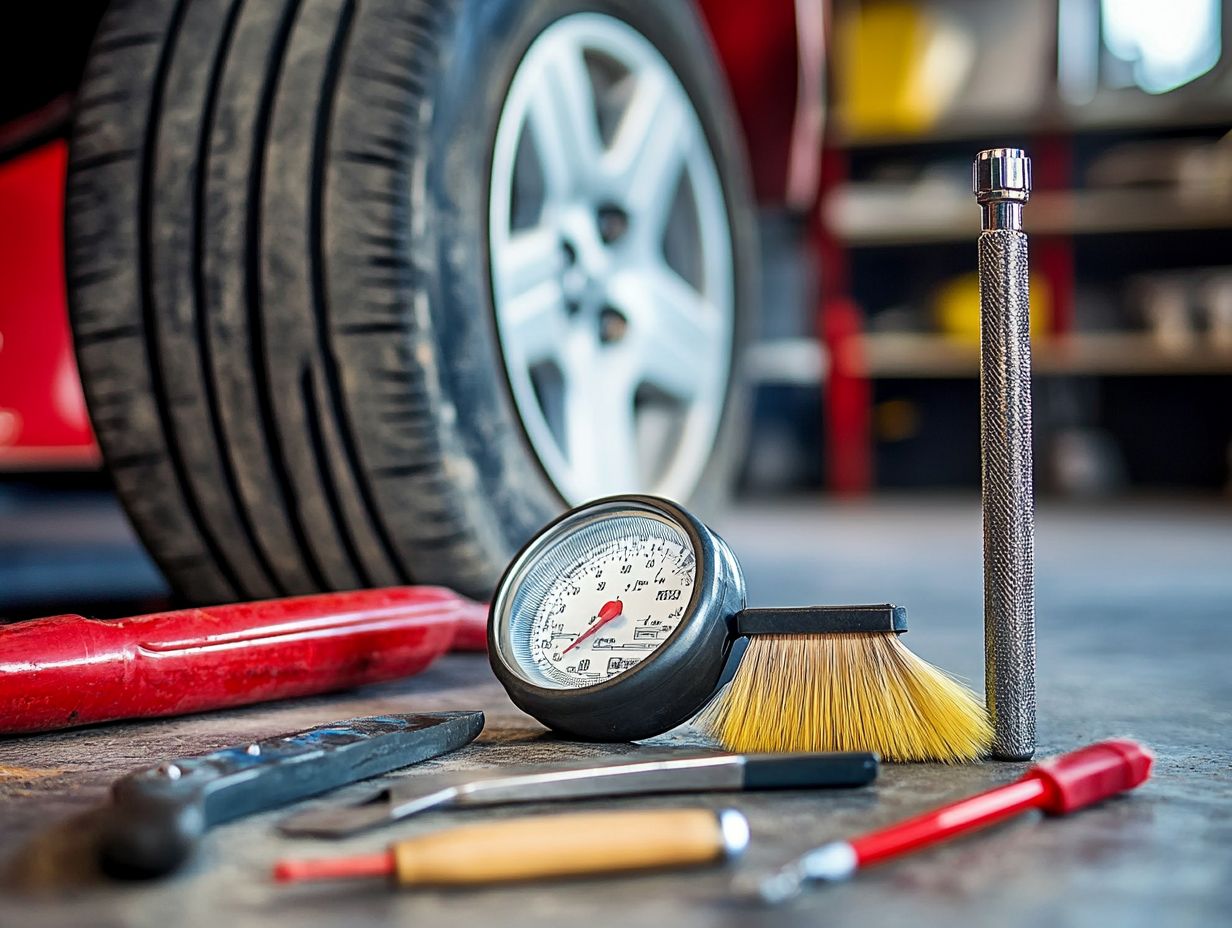
- Maintain proper tire pressure to ensure safety and improve fuel efficiency.
- Regularly rotate your tires to promote even wear and extend their lifespan.
- Monitor tire tread and alignment, addressing any signs of wear to maintain vehicle performance.
Why Tire Maintenance Matters for Your Safety and Performance
Proper tire maintenance is vital for both vehicle performance and safety. When your tires are well-maintained, you ll experience enhanced handling, improved traction, and better fuel economy, all while minimizing the risk of accidents from tire blowouts or uneven wear.
Regular tire checks, including examining tread depth and pressure, can significantly extend the life of your tires and elevate your overall driving experience. Every vehicle owner should jump on the chance to prioritize tire care.
This involves a variety of tasks, from conducting visual inspections and rotations to making alignment adjustments and ensuring proper inflation, all aimed at maintaining the maximum weight your tires can safely carry.
Tire Pressure
Maintaining the correct tire pressure is essential for ensuring your vehicle s safety and performance. Both under-inflated and over-inflated tires can lead to reduced fuel efficiency, increased wear, and a greater risk of tire blowouts.
That s where the Tire Pressure Monitoring System (TPMS) becomes your best friend. It offers real-time pressure readings and alerts you when tire pressure strays from the recommended levels, allowing you to address any issues promptly.
By regularly checking your tire pressure ideally once a month you can significantly extend the life of your tires and elevate your driving experience to new heights.
Why It Matters and How to Check It
Checking and maintaining the correct tire pressure is vital for your vehicle’s safety and performance. It directly impacts your fuel efficiency and overall driving experience. Properly inflated tires optimize gas mileage and enhance handling and traction, significantly reducing the risk of accidents from flat tires or blowouts.
To ensure your tire pressure is on point, refer to your owner’s manual for the recommended PSI (pounds per square inch) and make it a habit to check regularly ideally, once a month. A tire gauge will be your best friend here, helping you monitor pressure levels and make adjustments as needed.
Alongside those monthly checks, inspect your tire pressure before long trips or when significant weather changes are on the horizon, as temperature fluctuations can influence inflation. Tools like a digital tire pressure gauge or a simple pencil gauge can provide quick and accurate readings. For the most reliable results, remember to inflate your tires in the morning when they re cold.
Regular maintenance extends beyond just checking pressure. Rotating your tires every 5,000 to 7,500 miles and inspecting for wear is essential for maintaining optimal performance. By prioritizing these practices, you ll enhance both safety and fuel economy, ensuring a smoother ride every time you hit the road.
Check your tire health today for a safer driving experience!
Tire Rotation
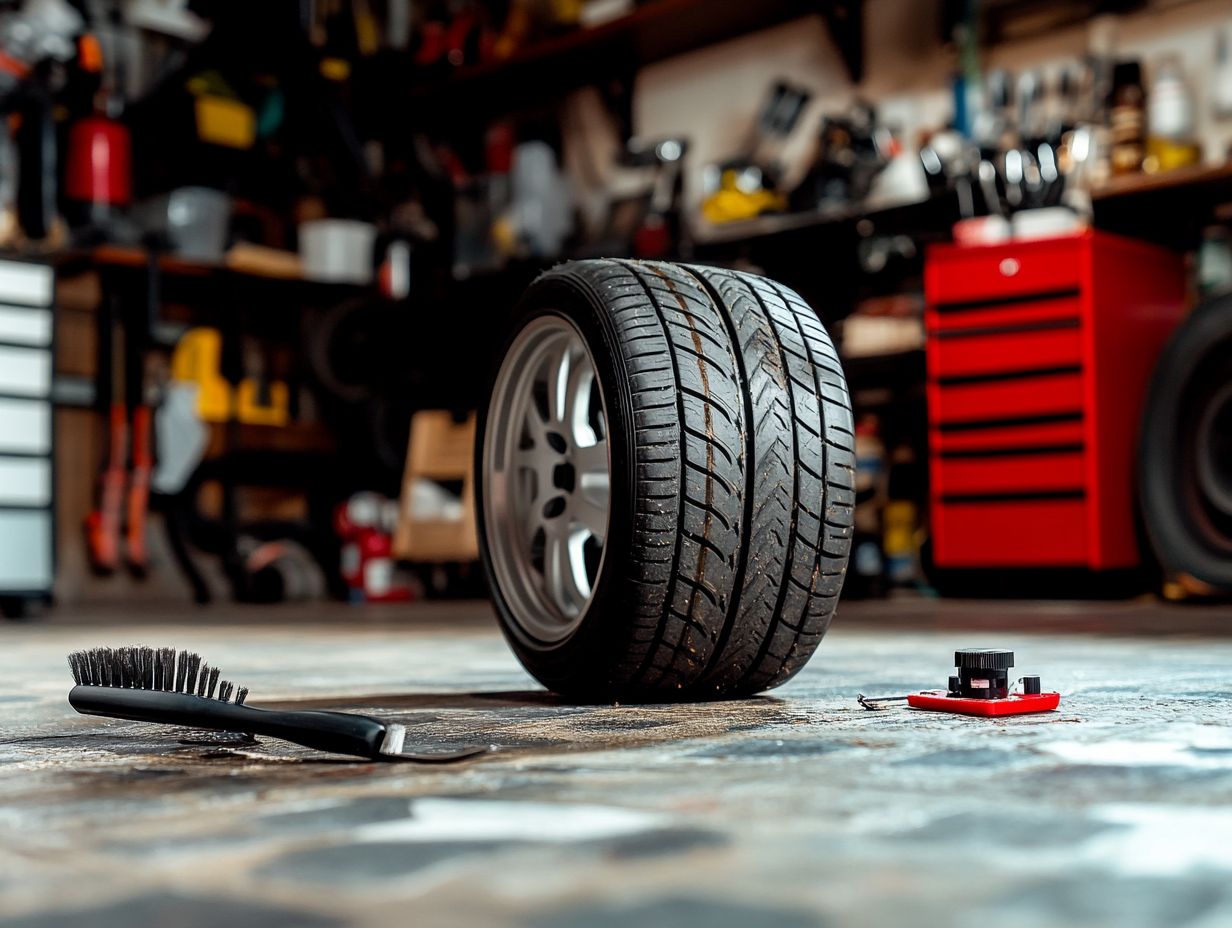
Tire rotation is a crucial part of vehicle maintenance. It helps your tires wear evenly, extending their lifespan and optimizing overall performance.
Tires wear differently based on their position on your vehicle. Regular rotation is vital to avoid uneven wear, which can impact handling and safety.
Most manufacturers recommend rotating your tires every 5,000 to 7,500 miles. Consult your owner s manual for specific guidance tailored to your vehicle.
Frequency and Techniques
The ideal frequency for tire rotation typically falls between 5,000 and 7,500 miles. Consider your driving habits and road types to find the best schedule for you.
Using proper techniques during tire rotation such as a crisscross pattern or a straight rotation can enhance effectiveness and promote even wear across all tires. A qualified mechanic can provide valuable insights on best practices for your vehicle.
Ineffective tire rotation can lead to uneven tire wear. This not only shortens tire lifespan but also compromises your vehicle’s performance and safety. Tires that wear improperly can reduce fuel efficiency and create a rougher ride, leading to costly repairs sooner than expected.
As a vehicle owner, make it a habit to prioritize routine maintenance checks. This helps catch potential issues early, ensuring your tires function optimally and last longer. By incorporating tire rotation into your maintenance schedule, you enhance your vehicle’s performance, paving the way for safer and more efficient driving experiences.
Tire Tread and Alignment
Tire tread and alignment are vital components that significantly impact your vehicle’s safety and performance. They affect traction, handling, and the overall comfort of your driving experience.
Maintaining the correct tread depth is essential for optimal grip on wet or slick surfaces. Proper alignment prevents uneven wear and extends the lifespan of your tires.
Regularly inspect your tire tread using the penny test or a tread depth gauge. If you notice signs of misalignment such as your vehicle pulling to one side or uneven tire wear seek professional alignment services promptly.
Signs of Wear and How to Address Them
Recognizing the signs of tire wear is crucial for maintaining your vehicle’s safety and performance. Worn tires can compromise handling and elevate accident risk. Look for indicators like low tread depth, uneven wear, and visible damage such as cracks or bulges.
If you notice any of these signs, prioritize tire inspections and consider a replacement if tread depth falls below the recommended level or if there s significant damage. Regular inspections can reveal issues that may not be immediately noticeable. For example, improper inflation can also affect tire wear and overall vehicle stability.
Watch for signs of uneven wear patterns, as these could indicate alignment problems needing professional attention. If your tread depth is nearing 2/32nds of an inch, act swiftly to ensure your safety.
Ignoring these signs can jeopardize your vehicle s performance and your safety on the road. Prompt action is a key aspect of responsible vehicle ownership.
Spare Tire Care
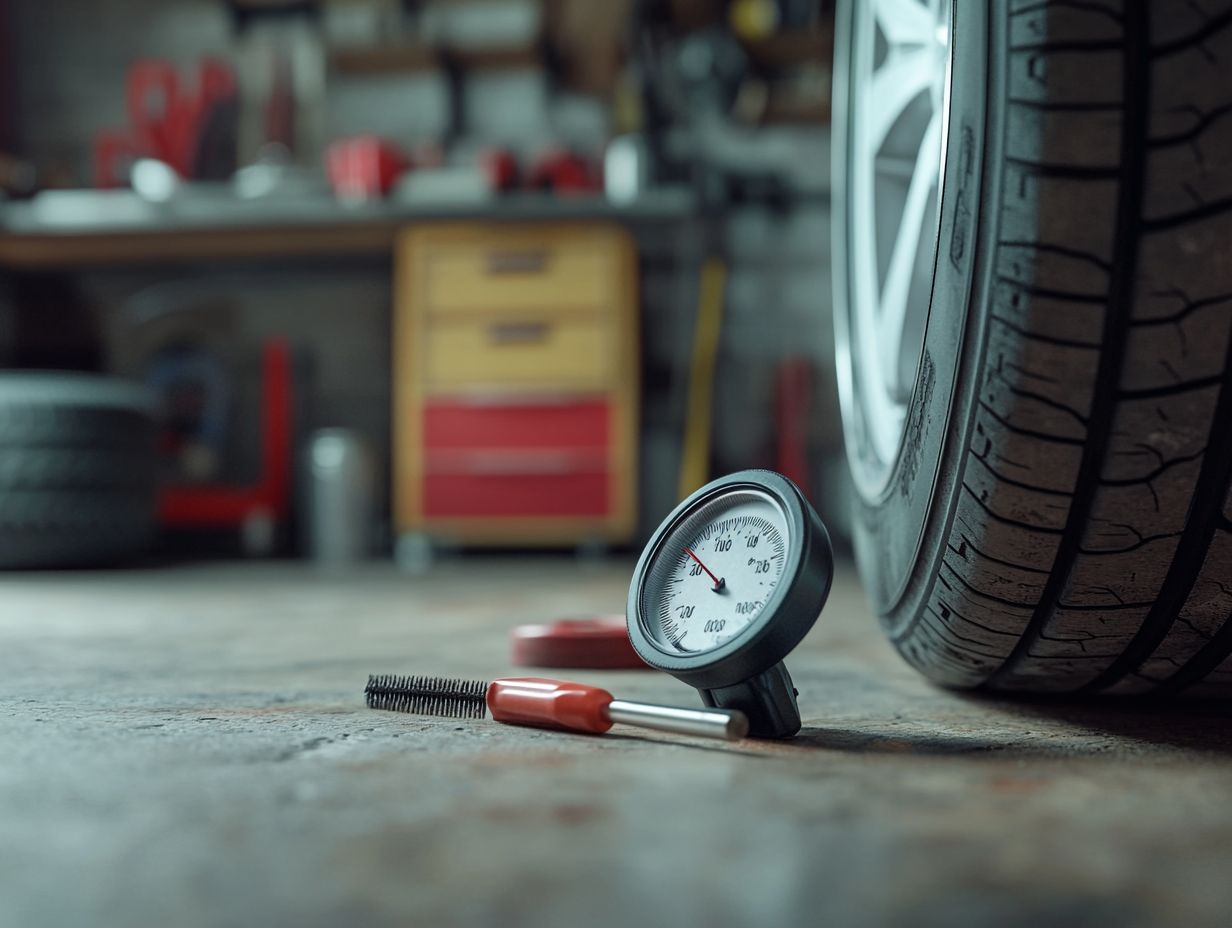
Caring for your spare tire is essential for maintaining your vehicle. It ensures you’re prepared for unexpected moments, like flat tires or blowouts. A well-maintained spare tire can be a lifesaver in a jam and requires regular inspection to confirm it’s in tip-top shape.
As a responsible vehicle owner, routinely check the air pressure of your spare tire. Look for signs of wear and aging and store it properly to prevent damage or deterioration.
Tips for Maintaining Your Spare Tire
To ensure your spare tire is always ready for action, follow a few essential maintenance tips that emphasize regular inspection and proper storage. Start by checking the tire s pressure periodically to make sure it meets the recommended levels; after all, a flat spare is useless when you need it most.
Store your spare tire in a cool, dry place, away from direct sunlight or harsh conditions. Make it a habit to inspect it regularly for any signs of damage or wear that could compromise its effectiveness.
Check the pressure at least once a month. Temperature fluctuations can impact inflation levels. During your inspection, look out for cracks, bulges, or any unusual wear patterns these could signal internal damage that isn’t immediately visible.
In terms of storage, elevate the tire off the ground to prevent moisture accumulation, which can lead to corrosion. Act now to keep your spare tire in top shape and drastically reduce the risk of flat tire emergencies that may arise.
Seasonal Tire Care
Seasonal tire care is vital for ensuring your vehicle operates at its best while ensuring your safety on the road. Different weather conditions can greatly affect tire performance and longevity.
In the winter months, equipping your vehicle with winter tires is essential; these tires offer superior traction on snow and ice. Conversely, summer tires are crafted for optimal performance in warmer temperatures.
Regular inspections and maintenance are fundamental to assessing how your tires are faring in changing conditions, allowing you to keep them in excellent condition.
Preparing for Different Weather Conditions
Preparing your tires for varying weather conditions is crucial for vehicle maintenance that can greatly influence your driving experience and safety. For example, opting for winter tires during the colder months enhances grip on icy and snowy roads, while summer tires deliver superior performance in warm, dry conditions. Regularly inspecting your tires for wear and damage ensures they can handle the specific challenges each season presents.
All-season tires also play a vital role; they strike a balance between performance in rain and mild temperatures, yet they may not perform as well in extreme conditions. Ensure that your tires are properly inflated and possess adequate tread depth the depth of the grooves on your tire that help grip the road not just for optimal performance but for enhancing safety on the road.
Seasonal inspections should include checking for uneven wear patterns or any signs of damage, particularly important as you transition between different weather conditions. By maintaining your tires diligently, you can significantly reduce the risk of accidents and enjoy a smoother, safer ride, no matter what the weather throws your way.
Frequently Asked Questions
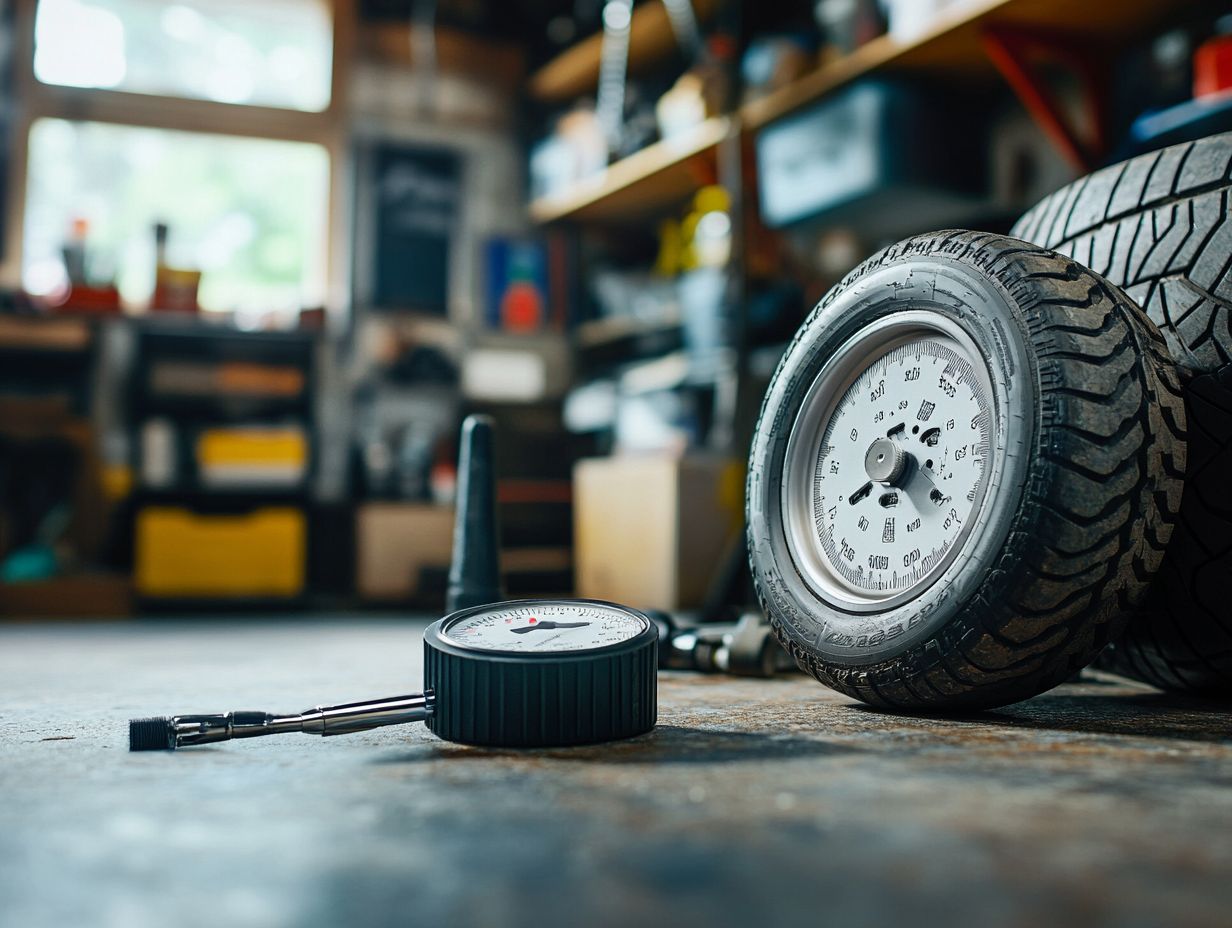
Here are some common questions regarding tire care:
How often should I check my tire pressure?
It is recommended to check your tire pressure at least once a month, as well as before long trips or if you notice any changes in your vehicle’s handling.
What is the proper way to inflate my tires?
Always follow the manufacturer’s recommended tire pressure, usually found on a sticker inside the driver’s side door jamb. Use a tire pressure gauge to ensure accuracy.
What is the best way to store my tires?
Tires should be stored in a cool, dry, and well-ventilated area away from direct sunlight. They can be stacked on top of each other, but avoid placing heavy objects on top of them.
How often should I rotate my tires?
Tires should be rotated every 5,000-7,500 miles to ensure even wear. This can also prolong the life of your tires and improve overall handling and performance.
Can I repair a punctured tire?
Small punctures in the tread area can often be repaired by a professional. However, larger punctures or damage to the sidewall may require the tire to be replaced.
What should I do if I notice irregular wear on my tires?
If you notice uneven wear on your tires, it may indicate improper inflation or misaligned wheels. Worn suspension parts can also lead to this problem.
Don t wait! Get your tires checked to stay safe on the road.

